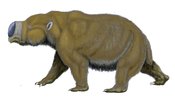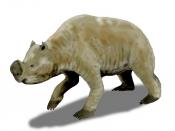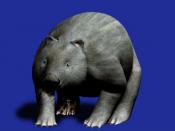In 1830 Mr. Rankin tied a rope around a projection out of a rock face in order to lower himself into Wellington Cave (Horton, 1980). The projection turned out to be the bone of a giant extinct marsupial. It was to be the first discovery of a great range of giant marsupials. Were these animals extinct?? Horton (1980), describes how Leichhart believed that on his journeys to northern Australia he would find Diprotodon still roaming over the land. We now know that he was probably only about 20,000 years to late (Flood, 1995). In general, all the animals greater than 40 kg in body weight became extinct at the end of the last Ice Age. By the mid 19th century scientists had already begun to postulate about the disappearance of these animals, and today it remains one of the most controversial subjects presented to man, (Horton, 1980).
Australia was not the only country to experience extinctions of large animals, (Martin, 1984).
At the end of the last glacial period nearly every continent experienced extinctions of large animals. Animals like the Mammoth, giant ground sloths, and mastodons were roaming the Americas. Northern Eurasia featured woolly mammoths, giant deer, hippopotamus and straight tusked elephants. Of all the continents, it could be argued that Australia lost some of the most distinctly unique fauna in the world. The popular opinion for the cause of extinction is the 'blitzkrieg' hypothesis, which is held by such researches as Paul Martin in his controversial article "Prehistoric Overkill: The Global Model". This states that humans are directly responsible for these extinctions world wide. The Problem with this model for Australia is that humans may have arrived on this continent well before the extinctions took place (Flood, 1995). On other continents the extinctions coincided almost exactly with the arrival...


